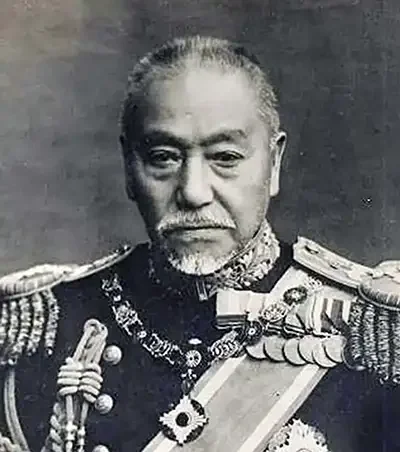- Military History
- Biographies
- Militarians Biographies
- Marshal-Admiral Togo Heihachiro
Marshal-Admiral Togo Heihachiro
The greatest Japanese naval leader of modern times who led the Japanese fleet to victory in the Russo-Japanese War
Kōshaku (Marquess) Tōgō Heihachirō was born on January 27, 1848, in Kagoshima, Satsuma, Japan. He raised amidst the turmoil created by US commodore Oliver H. Perry's "opening up" of Japan to the West, Heihachiro Togo joined the Satsuma provincial navy in 1866. Four years later, he entered the new imperial Japanese navy as a cadet. From 1871 to 1878, he studied naval science and tactics in England. He admired Admiral Horatio Nelson and made it a point to travel to Cape Trafalgar to see the site of his hero's greatest victory.
After returning to Japan, he served in several naval posts. Togo supervised the building of the Yamoro, one of Japan's first modern warships, and he served as its first commander. He created an international incident when he sank a British merchant ship during the First Sino-Japanese War in 1894. The British steamer was found to be carrying Chinese troops; therefore, Togo was not reprimanded for his action. Togo began heading the Advanced Naval College in 1896 and was made commander of the new naval base at Sasebo in 1899. In 1900, he observed the Russian ships during the police actions of the Boxer Rebellion in China and concluded they were less efficient than was believed.
When war between Russia and Japan became imminent in 1903, Togo was made commander-in-chief of the combined Japanese Imperial Navy, commanding the ship Mikasa. On the eve of war with Russia, he was made admiral. Following orders from his high command, Togo fired the first shots of the Russo-Japanese War, sending torpedo boats into the harbor of Port Arthur, Russia’s great military base, to attack the Russian ships there on February 6, 1904. Togo's naval blockade of Port Arthur and Vladivostok brought about their surrender and secured communications between the Japanese home islands and the war efforts in Korea and Manchuria.
In desperation, the Russians dispatched their Baltic fleet to Japan, where they clashed with Togo’s ships in May 1905 in the Tsushima Strait, which connects the Sea of Japan and the East China Sea. At the end of August 1905, Togo completely outmaneuvered the Russian fleet with his smaller but better-armed ships using a maneuver called “crossing the enemy’s T”; a new and spectacular naval warfare tactic, in which a line of warships crosses in front of a line of enemy ships, allowing the crossing line to bring all their guns to bear while receiving fire only from the forward guns of the enemy, and which later was used by the French and British navies. Togo lost only 117 men and three torpedo boats, while killing 4,830 enemy soldiers and destroying 33 out of the 35 Russian ships ending the war.
The hero of the war, Togo became Chief of the Naval General Staff and war councilor to the Emperor after the war. He was made a count in 1907 and promoted to Fleet Admiral in 1913. He didn’t serve in World War I, but had trained many men who did. The education of the future Japanese Emperor Hirohito was in Togo’s hands from 1914 to 1924. Remaining one of the most revered leaders in Japan, he was also made a marquess shortly before his death in 1934.
Kōshaku Tōgō Heihachirō died on May 30, 1934, at 86 in Tokyo, Japan. He was the first Japanese non-royal man to be honored with a state funeral.
Marshal-Admiral Togo Heihachiro - Quick Facts
- Fleet Admiral
- Marshal-Admiral (Gensui)
- First Sino-Japanese War (1894-1895)
- Russo-Japanese War (1904-1905)
- {{#owner}}
- {{#url}} {{#avatarSrc}}
{{name}} {{/url}} {{^url}} {{#avatar}} {{& avatar}} {{/avatar}} {{name}} {{/url}} - {{/owner}} {{#created}}
- {{created}} {{/created}}
























